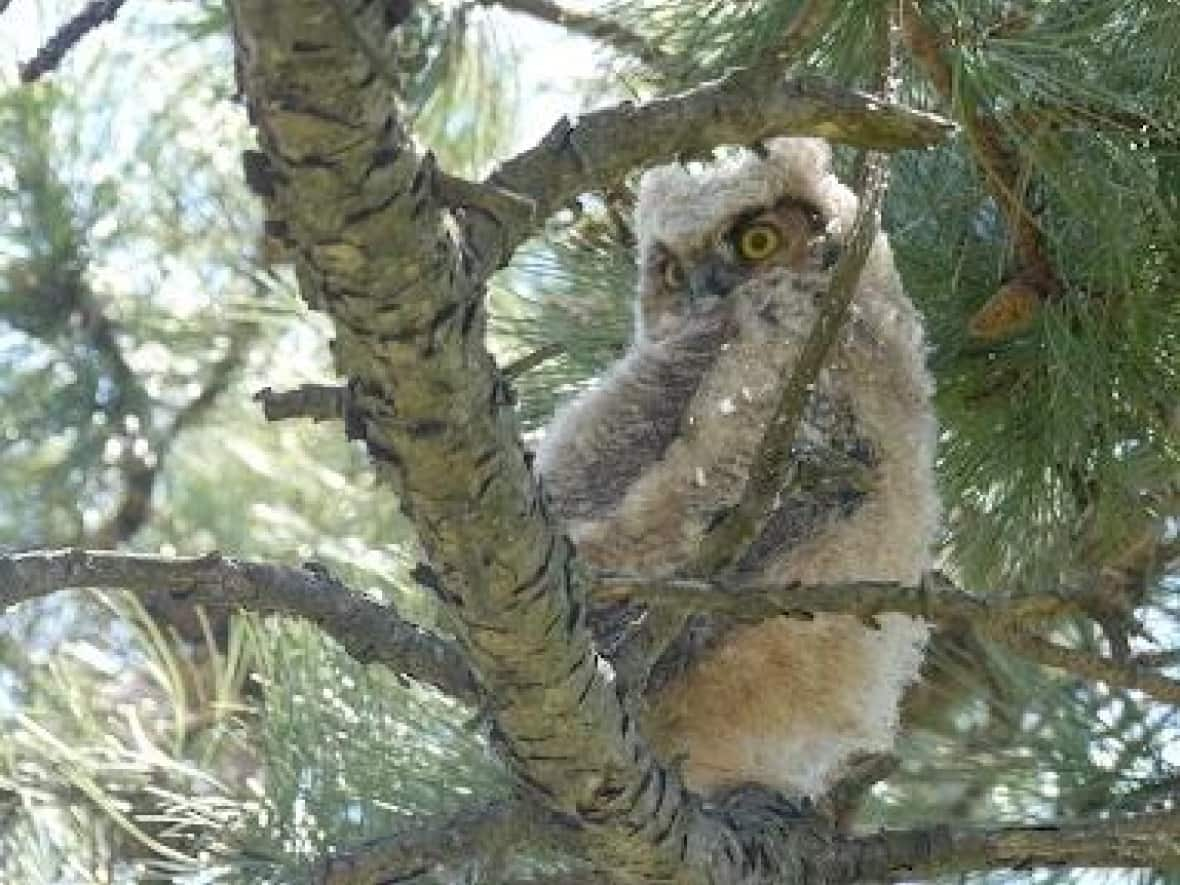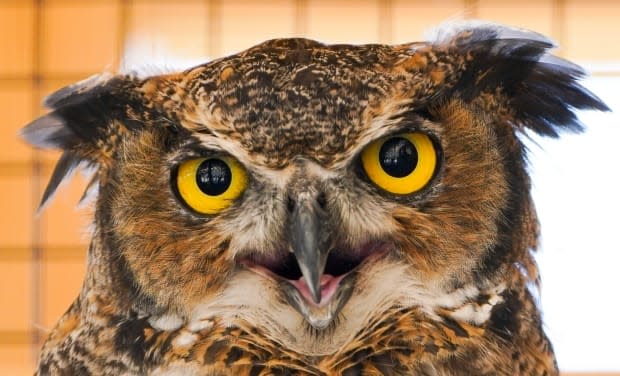Photog shares tips on being a conscientious birder, not dangerous paparazzi

There's a tree in Ottawa that's been surrounded by people for the past few weeks, but it's not the attraction. Rather, it's the great horned owls calling it home that has people flocking to the site.
Photos of the owls are popping up on social media, and that could be putting the survival of the fluffy nestlings at risk, according to Melissa Groo, a wildlife photographer from New York state.
Groo, who also consults on ethics in wildlife photography for the National Audubon Society, said many wildlife-focused Facebook groups have stopped posting photos of owls — or at least their location — because of this risk.
Owls and other birds can also get stressed out if people linger too long for the best shot, she said.
"One of the things that I would try to remind people is these are just photos to us. But to a wild animal, every single moment is about survival."
That's why the Friends of Mud Lake Facebook group blocked posts with the word "owl'' earlier in the pandemic.

David Stibbe created the group for the Britannia Conservation Area following a different issue, but the page has seen the number of wildlife photos grow immensely in recent years.
Mud Lake used to be home to a pair of great horned owls, Stibbe said, but isn't any more.
"I would literally see 30, 40, 50 people with cameras up there every day, and they would go off the beaten path and break new trails," Stibbe said.
"It ended up almost being like paparazzi for a celebrity, when [the birds] show up in a major urban centre and everybody knows where they are."
The presence of the great horned owls led to things deteriorating, Stibbe said, due to a "few bad apples."
"People were starting to bait the birds to get them to come down and fly, [by] throwing dead mice. You name it, it happened."
Stibbe said he's looking forward to plans the National Capital Commission is developing for the area that would hem visitors into a path with guardrails, as the ecosystem is quite fragile.
Ethical photography reminders
In the Audubon's Guide to Ethical Bird Photography and Videography, which Groo contributed to, respect for a bird's habitat is paramount.
The guide recommends not trampling vegetation or moving branches away from a nest, as they provide important camouflage.
It also suggests not using flash photography, especially for nocturnal birds like owls as it may "temporarily limit their ability to hunt for food or avoid obstacles."
For Groo, the easiest way to ensure a bird's comfort is by keeping at least eight metres away.
"This is not really a great opportunity for an iPhone shot," she told CBC Radio's Ottawa Morning.
Another way to judge the right distance, the guide says, is by the bird's reaction to you. If they're flying or freezing, you're too close.
Owlets at this fluffy stage are testing their wings, Groo said, but still rely on their parents for food. People could scare the parents off.
She also said you have to consider where you're watching them.
Groo referenced an incident in Washington state a few years ago, when a northern hawk owl was discovered on private property and word got around.
People camped out with binoculars trained on the person's property — until one day the owl was discovered shot dead.
"It was quite likely that the homeowner had killed the owl because they just felt so aggrieved and disturbed," Groo said.


